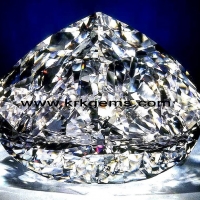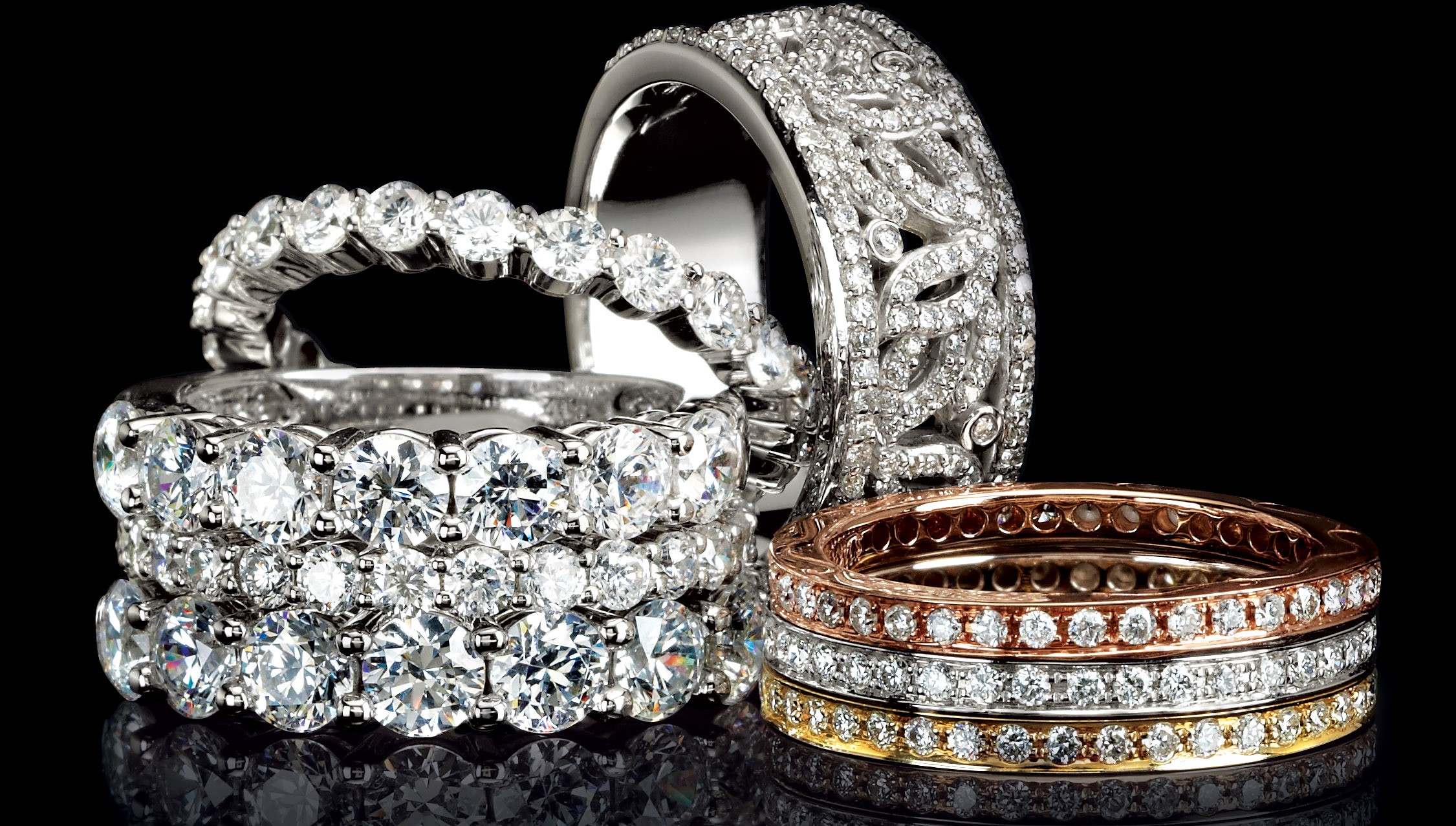July birthstone where rubies come from
Posted on Jul 1, 2016 in Featured, Ruby
Before we go searching for the July birthstone, here’s a little scientific background on the gem: ruby belongs to the mineral species corundum. The red color, which defines the variety called ruby, owes its color to traces of the element chromium. The more chromium, the stronger the red.
Rubies appear in different geologic settings. Some form in metamorphic rock like amphibole and marble, which result from the transformation of preexisting rocks. The most renowned rubies typically form in marble, which is created by heat and pressure acting on limestone. Called “marble-hosted,” by gemologists, these rubies lack iron and have a higher concentration of chromium. Because of this, these rubies may fluoresce red under ultraviolet light, which can intensify their color.

Mineral specimens like this ruby crystal on marble matrix are highly prized by collectors. Photo: GIA
Rubies can also be transported to the earth’s surface by igneous rocks like basalt which forms when molten rock cools and solidifies. Basalt-hosted rubies can contain iron, which can make them darker and less intense in color. Higher iron content can also mask red fluorescence, eliminating that extra glow of red color.
Ruby hues range from orangy red to purplish red, but the finest rubies have a pure, vibrant red to a slightly purplish red hue. These hues have emotional and cultural associations with love, passion and power. Tie these powerful feelings to a beautiful, rare gem and the result is an object of great desire. So, it’s not surprising that ruby is considered the king of red gemstones!
Now that we’ve ignited your passion for the July birthstone, we’ll show you some places where rubies come from.
Ruby Gems from Myanmar
Myanmar (formerly known as Burma) has produced some of the finest examples of the July birthstone. An important source since the fifteenth century, the Mogok area in Upper Burma has yielded prized specimens that have a vibrant red body color, softened by the presence of light-scattering inclusions and a glowing red fluorescence. These gems adorn some of most spectacular jewelry ever fashioned.

This exquisite 6.16 ct ruby from Myanmar is cradled by triangular-shaped diamonds. The splendid color of this July birthstone shows why ruby is said to stoke desire. Copyright: Christie’s Images/The Bridgeman Art Library
The city of Mogok is home to approximately 300,000 people. Morning brings a fine mist that cloaks the single-story wooden houses that huddle around the lake. The Mogok Stone Tract, the area where the July birthstone is found, is a place of breathtaking contrasts. Jutting skyward are white marble pinnacles weathered with patches of black and green. Buddhist temples are precariously perched on top of some of them.
The Mong Hsu region has been another important producing area since 1991, supplying the world with the vast majority of commercial quality rubies. The deposits at both Mogok and Mong Hsu are marble hosted. Today rubies from these areas are generally heat treated to improve their color.

In Mogok, homes line the shores of an artificial lake, which was created by the flooding of an early 20th-century ruby mine. A pagoda dominates the city’s skyline. Photo: Robert E. Kane/GIA.
Mining is still an important industry in Myanmar: more than 1,000 working mines produce sapphire, spinel, peridot, topaz, amethyst, and moonstone. However, production from Myanmar remains unstable. As of 2016, U.S. sanctions remain in place prohibiting the importation of ruby and jade from Myanmar.
Ruby Gems from Vietnam
The story of Vietnamese rubies began in 1983 when gems were discovered in Luc Yen – a mountainous region of rugged beauty in northern Vietnam. Steep mountains covered by rainforest rise out of plains checkered with rice paddy fields and villages. Traveling to these mines is challenging, to say the least!

A panoramic photo of Luc Yen: a meandering stream, rice paddies, and mountains carpeted by rain forest. Photo: Vincent Pardieu/GIA.
The first rubies found in the Luc Yen area rivaled those from Mogok. Their color was described as being red to purplish red. Mining these gemstones largely remains an artisanal affair – local diggers work the soil in hopes of unearthing gem-quality, ruby rough.

A fine-quality ruby from Vietnam should impress anyone who loves the July birthstone. Photo: Robert Weldon/GIA.
Ruby Gems from Mozambique

Raw beauty: A 37 gram ruby rough from Mozambique is destined to be fashioned into something breathtaking. Photo: Vincent Pardieu/GIA.
While the presence of rubies from Mozambique, a nation in southern Africa that abuts the Indian Ocean, had been known since the 1500s, mining and marketing came in fits and starts until 2011, when Mozambique-based Mwiriti Ltd partnered with Gemfields, a leading supplier of ruby and emerald. Now the mines at Montepuez are one of the world’s most important sources for the July birthstone, yielding high-quality specimens that have been compared to rubies from Mogok.

It is a common practice to treat rubies with heat to improve their appearance. These rubies from Lichinga and Montepuez are not heated. Photo: Robert Weldon/GIA. Courtesy: Tommy Wu, Shire Trading Ltd., Hong Kong.
The area around Montepuez is beautiful. Occasional mountains break up vast stretches of green savannah and large swaths of the Miombo forest stretch across the region. Reddish soil forms a breathtaking, colorful canvas.

In 2009, the first rubies from Montepuez were found near Namahaca, a village that has just a few hundred huts. Photo: Vincent Pardieu/GIA.
Ruby Gems from Kenya
Kenya is rich in ruby deposits although only a very small percentage of the ruby rough is suitable for beads, cabochons and faceted stones. One of the most important sites is the John Saul mine, which is located near Tsavo-West National Park. Vast plains covered in scrub brush and small trees, and lonely mountains that scrape the clouds make up this dramatic setting. The area is also known among gemologists as it’s near Tsavo National Game Park, close to where tsavorite (a variety of garnet) was found.
Superior specimens are rare, but on occasion, ruby rough that resembles material from Myanmar is found. Because of their marble-hosted origin, Kenyan rubies have high chromium and low iron content, causing intense fluorescence. Most of these rubies are heat treated to improve their color.
Other historic ruby locations include Sri Lanka, Thailand, and Tanzania. Sri Lanka is better known for producing sapphire; Thailand’s ruby deposits are nearly exhausted. Ruby deposits in Tanzania are not greatly developed compared to other sources. However some of the Tanzanian deposits show great promise; the finest rubies from Winza, in central Tanzania are highly sought-after, and command high prices in the market.

This suite of jewelry contains cabochon-cut rubies from Tanzania. The total weight of the rubies is 71.03 carats in the necklace and 15.25 carats in the earrings. The ruby in the ring weighs 4.72 ct. Photo: Kevin Schumacher/GIA. Courtesy: Keiko Chung.
Ruby is one of the most valuable of all gems. Luckily for ruby lovers, and those with a July birthstone, new sources like Montepuez means that there will be a steady supply of highly desirable rubies. So, the love affair will continue for decades to come!
Now that you know about rubies, of course, you might have a desire to add one to your jewelry collection. Shop wisely with tips from our ruby buying guide.
http://4csblog.gia.edu/2016/july-birthstone-where-rubies-come-from
 KRK GEMS
KRK GEMS
 ธ.กรุงเทพ
ธ.กรุงเทพ

อีเมล : krkgems@outlook.com
TOP เลื่อนขึ้นบนสุด






